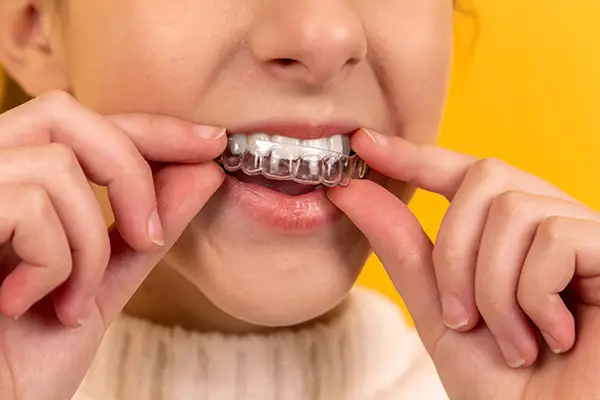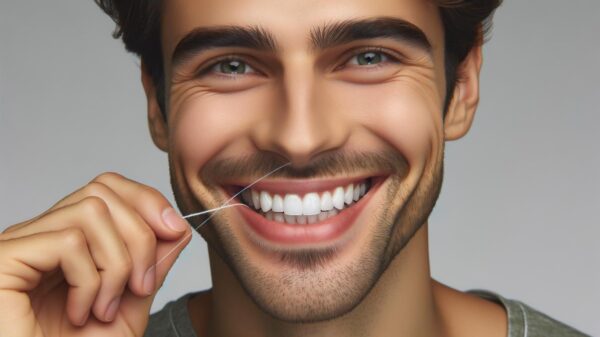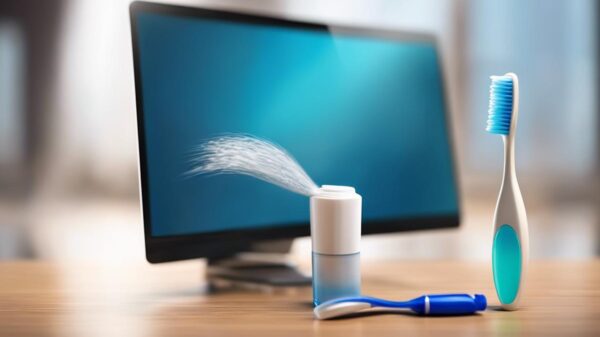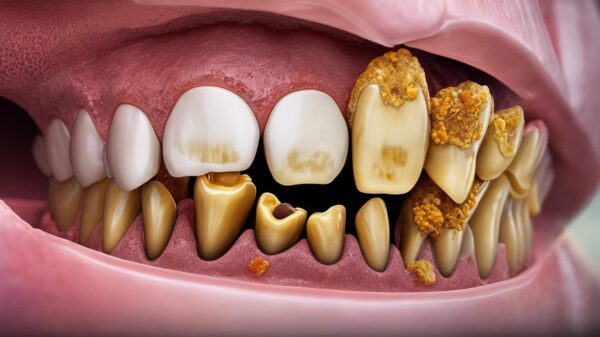The Best Ways to Clean a Retainer
While it may be second nature to brush your teeth, you might want to reconsider what you do with your retainer. Many people simply wash their retainers in the sink with toothpaste and call it good. But there are several other ways you can clean it that will make sure your retainer stays in prime condition until next time.
You can use a retainer cleaning solution, wash it with a toothbrush, soap it in mouthwash, store it in a retainer case, use boiling water, keep it in the fridge, or use mouthwash to clean around the brackets.
Since retainers go in your mouth daily, it is important to keep them clean. Keep reading to learn more!
Type of Retainers for Mouths
Retainers for the treatment of teeth typically fall into two categories, removable appliances, and fixed appliances. Removable appliances are generally inexpensive but have to be removed when cleaning teeth.
Fixed retainers are fitted by a dentist or orthodontist. The latter can be either bonded or non-bonded. Bonding is where the appliance is attached to the tooth using an adhesive.
Bonded retainers are generally more expensive than their non-bonded counterparts. However, they are less noticeable and so preferred by some teenagers, for example. Non-bonded appliances can be either fixed or removable.
Fixed appliances are located between teeth whereas removable retainers are fitted behind the teeth. The latter can either be held by a wire to a brace or a retainer is attached to a band.
Retainers are made from metal, ceramic, or plastic and come in different colors, shapes, and sizes.
Fixed Retainers
Fixed retainers have been used for over 50 years as an alternative to extraction. They are now preferred by many young patients because they are less obvious, especially if bonded.
Fixed retainers are also known as bonded retainers because they are made from a special material that bonds directly to teeth. They can either be bonded with an intermediate resin or by bonding brackets to the outside of the teeth just as with conventional braces.
Non-Bonded Retainers
Non-bonded retainers can be removable or fixed. Removable retainers are held in place by biting pressure and can usually be removed for cleaning or to eat food that is difficult to chew with the appliance in place. Some people prefer not to remove them to eat, to encourage more thorough cleaning.
Fixed retainers are permanently attached to teeth by use of an adhesive or bonding resin. This is done while the patient is receiving their braces and the dentist uses brackets bonded to the teeth which are also about the retainer wire so that it can be fastened securely.
Bonded Retainers
Bonded retainers have been used for over 50 years as an alternative to extractions. Their main disadvantage is that if the retainer becomes loose, it no longer provides any tooth support so will have to be replaced by a new one.
For bonded retainers to work effectively, there must be sufficient tension in the wire so they remain in position even when the patient bites down with the appliance in place. The wire used for fixed retainers is usually made of stainless steel and it is manufactured in a variety of thicknesses and spring qualities which provides different amounts of tension when fitted over teeth.
8 Ways to Clean Your Retainer
Now that you know what types of retainers are available, here are some tips for cleaning and disinfecting them.
1. Retainer Safe Cleaning Solution
If you don’t want to accidentally ruin your retainer or if it is very difficult for you to clean, like a Hawley retainer, then make sure to pick up some of the retainers specific cleaner. Typically they usually come in small aerosol cans and will contain instructions on how best to use them.
You can find retainer cleaners at your local cosmetic store or online. It will usually come in a spray bottle or tablet, and you simply spray the teeth of your retainer with it. Rinse off with cool water, then use an old toothbrush to gently brush it clean, ensuring that you get rid of any debris that might have built up.
![]()
2. Wash It With a Toothbrush
this might seem like an obvious step. However, the majority of people do not clean their retainers as well as they should. If you have a Hawley retainer, for example, those are extremely delicate and will become easily damaged by anything other than a very soft-bristled brush or even your hands if you can fit them through the plastic.
Steps to Cleaning Your Retainer with Toothpaste
- First, you need some toothpaste.
- Fill a cup with just enough water to cover the retainer that needs cleaning. Add some toothpaste into the water and mix well until it forms a paste.
- Leave this for at least 15 minutes, then use one of the many different types of brushes to scrub each part of the retainer clean.
- Once you have scrubbed every part of the retainer, rinse it off and leave it to dry in a place where it can be kept away from dust and other particles.
The next day you will notice that your retainer is much cleaner than before! You should be able to keep it much longer and save money on expensive cleaning products.
![]()
3. Soak it in Mouthwash or Cold Water
Mouthwash will help to disinfect your retainer and kill any bacteria or germs that may be attached to it. Place the retainer into a container of cold water with an ounce or two of mouthwash and let it sit for a few minutes before removing it.
Another way is to soak the retainer in cool water. You should do this once a day, for an hour at the least. The advantage of this method is that it’s completely free. After you’re done, simply use an old toothbrush to gently brush any remaining particles away.
4. Store in a Retainer Case
In addition to cleaning your retainer, it’s also important that you store it properly so that it doesn’t get damaged or lose its shape. Clean your retainer and set it out on a clean paper towel and let dry, and then place it in the retainer case where it’s ventilated and won’t get dirty.
5. Keep it in the Fridge
Refrigeration is one of the best ways to keep your retainer clean and sanitary especially if you wear retainers full time as I do. Refrigeration will kill any bacteria or germs. When you’re ready to store your retainer simply store it in the plastic bag it was first given to you in and place it back in the fridge.
6. Use Mouthwash to Clean Around Brackets
If you can not fit your hands through your plastic retainers, then mouthwash is the next best thing for cleaning around your braces or bracketed retainers.
Place enough mouthwash into a cup that will be deep enough to submerge your retainer for a few minutes, and then simply scrub the area around your brackets to remove any plaque or tartar.
![]()
7. Use Boiling Water to Remove Build-Up
If you have had your retainer for some time or if you grind at night, there will likely be build-up on the plastic arch of your retainer. Simply boil some water on the stove and place your retainer in the boiling water for several minutes. The hot water will allow it to flex enough to remove any buildup or gunk that may be on it.
8. Use Rubbing Alcohol for Stubborn Stains
Sometimes even with regular cleaning, some retainers can get stained by plaque, food, or even your fingers touching it and leaving a print. Use rubbing alcohol to clean away stubborn stains and restore the retainer’s shine and luster.
These methods will ensure you keep your retainers in tip-top shape until next time! For all of these methods, make sure you are careful to brush away any bits that have become stuck on the retainer.
Every night before bed, make sure you take your retainer out of your mouth and clean it thoroughly. Doing this will ensure that bacteria doesn’t build up, making it smell bad or even cause an infection. Be sure to always store the retainer in a safe place when you’re done using it for the day. This is especially important when you are traveling with your retainer so that it doesn’t get lost or broken.
Related Questions
Why are retainers cleaned? Denture retainers are formed at the same time as dentures, but because they are not directly in your mouth, they will accumulate more plaque and tartar than natural teeth. Plaque build-up can lead to inflammation, infection, and tooth decay. Tartar build-up on the retainers will cause them to discolor more quickly, stain your lips or gums when you remove them at night, and also affect how well they stay in place.
When are retainers cleaned? A retainer should be cleaned every day, or after each time it is removed from your mouth. If you are taking out the retainer for a special occasion, such as during an interview or meeting, be sure to clean it thoroughly before you put it back in. Be sure to take apart the retainer completely, including removing the retainer top plate.














